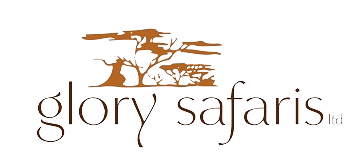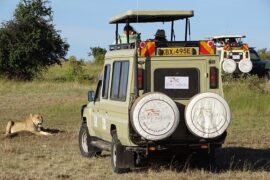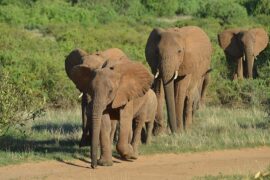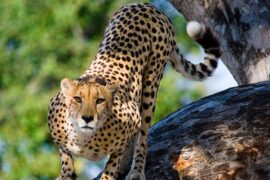Queen Elizabeth National Park
Queen Elizabeth National Park is Uganda’s most popular National Park and certainly one of its most scenic. Queen Elizabeth National Park lies to the south of the Rwenzori mountain range that soars upward within a dozen miles of its northern boundary.
The park is spread along the eastern shore of the Rift Valley’s Lake Edward covering 2500 [1980 SQ KMS] square kilometers.
Due to the incredible number of heavy-weight animals, elephants, hippos, and buffalo that lived there, it once had the distinction of carrying the largest wildlife biomass in the world.
The park’s northern section is particularly scenic. When the weather permits, there are tremendous views of the Rwenzori peaks from its plains, which are decorated with giant candelabra euphoria trees. In the northeast section of the park is Chambura Gorge, where they are habituating chimpanzees for visitors.
Getting There
Queen Elizabeth National Park is a five to six hour drive from Kampala via Mbarara, and is accessible by public transport. The nearest town is Kasese, to the north.
Climate
This region is hot and dry, though the nights are refreshingly cool – bring warm layers to wrap up in.
Wildlife
Queen Elizabeth National Park has an incredible variety of primates – from habituated chimps and playful baboons to vervet, colobus and red-tailed monkeys.
Visitors will also enjoy a classic safari with buffalo, lions, bushbucks, waterbucks, elephants, hippos and the occasional leopard, while smaller creatures such as warthogs and banded mongooses are as abundant.
While visitors should never approach the wildlife, animals will often stray into the roads and even the lodge grounds – an incredible experience!
Night forest walks provide the opportunity to spot nocturnal mammals such as the wide-eyed galagos (bushbabies) and pottos – and hear the eerie shrieks of tree hyraxes.
Birding
Queen Elizabeth National Park’s impressive array of habitats means that over 600 species of birds have been identified here.
Many water-associated birds live along the Kazinga channel, on the swampy shores of Lake Edward and in the Kyambura wetlands, including various herons, storks, plovers, jacanas, crakes, flamingoes and even shoebills.
Bright yellow weaver birds and their impressive nests are everywhere. Beautiful, tiny sunbirds are also common, as are the immense, scavenging marabou storks.
Attractions
Mweya Peninsula: The peninsula is the heart of sightseeing activities with excellent accommodation in the park. The only way to enjoy your tour in this park is by touring with a ranger guide.
This person helps you explore the park as well as the distant parts of the peninsula.Mweya information center organizes all the activities that tourists may want to get involved in.
Kazinga Channel: The Kazinga channel is about 40m long adjoining Lake Gorge to Lake Edward. It has the perfect view of the parks’ major wildlife ventures.
The shores of the lake attracts a large concentration of mammals, birds as well as reptiles all year around. The animals can be viewed well by the Nile cruise or probably at the entrance of Lake Edward.
The Equator & the The Queen’s Pavillion: The Uganda’s Equator provides a beautiful place for photo shooting along with craft shops that can make you buy a souvenir.
The Queen’s Pavilion is easily spotted by the northern entrance to the Crater Drive.




